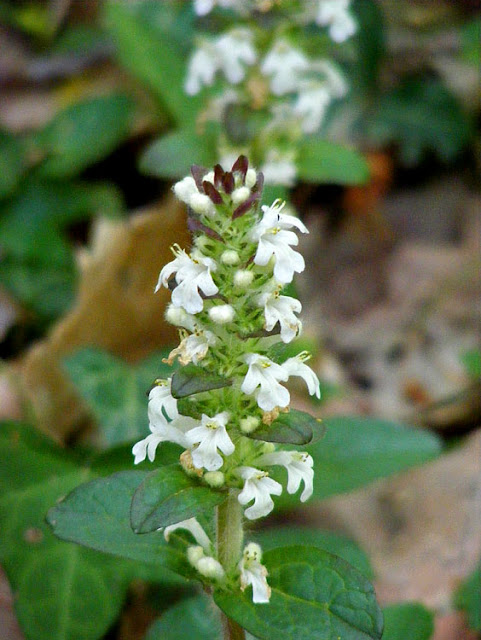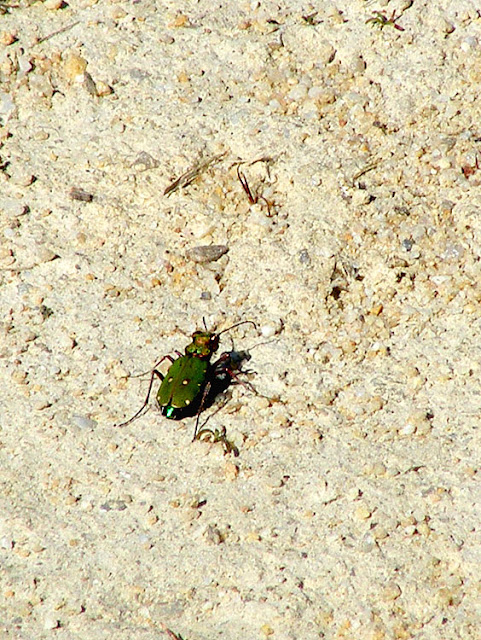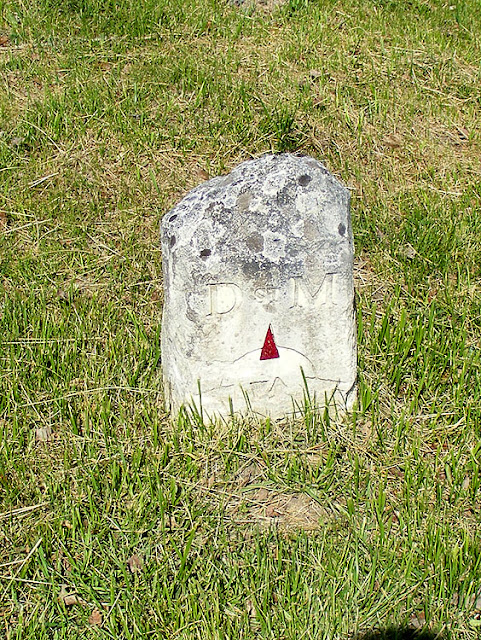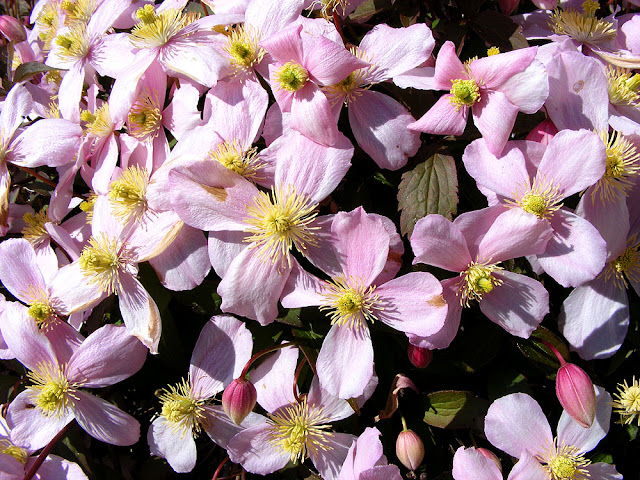Friends Tim and Gaynor invited a bunch of expats to lunch and to join them for a walk in the Forest of Preuilly on Good Friday and we were delighted to join them. It turned out a bit like a school outing -- lots of the participants were retired school teachers and there were lots of questions about natural history along the way. I talked about milkwort, asphodel, hornbeam and tiger beetles, amongst other things. Here are some photos from the walk.
There is a little patch of the rare white flowering form of Bugle Ajuga reptans (Fr. Bugle rampante) in a certain area of the Forest of Preuilly. I photograph it every time I pass that way.
Wood Anemone Anemone nemorosa (Fr. Anémone des bois).
White Asphodel Asphodelus albus (Fr. l'Asphodele blanc). There were lots of questions about what this was and Angela was very helpful in suggesting a mnemonic for remembering the name.
A large tree has been felled in the middle of the forest and cut into lengths.
Pine Processionary moth Thaumetopoea pityocampa caterpillars (Fr. les chenilles des processionaires du pin) doing their thing. I was interested that they have arranged themselves in order of decreasing size. Always be very careful of these if you encounter them, as their urticating hairs can be very irritating, maybe even dangerous if you get them in your eyes or your dog gets them in its mouth. Remember the hairs will be floating in the air if there are caterpillar nests in the vicinity.
Violet Fritillary Clossiana dia (Fr. la Petite violette) on a commonplace blue flowering Bugle.
Along one section of the track there were several Green Tiger Beetle Cicindela campestris (Fr. Cicindèle champêtre). They are so flighty and active I find it impossible to photograph them well. Apparently the trick is to find a mating pair. Then they will pose, and even tolerate being moved with a gentle prod of the finger, according to a fellow member of an insect group on FB.
The two featured in these photos are both female as far as I can tell. The species is a ferocious hunter both as an adult beetle and as a larvae, with mahoosive powerful jaws and lightning speed. These Green Tiger Beetles are the most commonly encountered members of this branch of the Carabidae family, with a widespread but localised distribution. They are found in hot open places, like the chalky forest tracks where we saw them.
A waymarker for the Chemin de Saint Martin, a pilgrimage route.
The letters D ST M stand for Doyenné de Saint Martin (Deanery of Saint Martin).
A female Brimstone butterfly Gonepteryx rhamni (Fr. le Citron).
Clematis montana flowering on Tim and Gaynor's back terrace.
************************************************
For details of our private guided tours of chateaux, gardens, wineries, markets and more please visit the Loire Valley Time Travel website. We would be delighted to design a tour for you.
We are also on Instagram, so check us out to see a regularly updated selection of our very best photos.
We are also on Instagram, so check us out to see a regularly updated selection of our very best photos.












6 comments:
Lovely post!
Talking of Tigers....
had a Patton's Tiger to the trap this morning....
I'd never heard of Patton's Tiger -- had to look it up. Good record!
Always enjoy the results of your going on a hike with your camera.
Someone's got a lot of log splitting to do!
I was there on Sunday again, and about half of it has been split.
Love this post, full of interesting bits of nature and information. Wow that tree looks like it was huge! Keep well Diane
I've focused on the bits that my companions were interested in, so that's why it engages I think.
Post a Comment